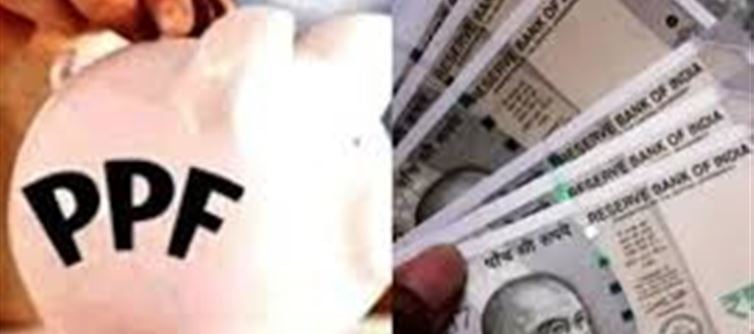
On September 30, 2025, the government will announce its much-anticipated decision regarding the interest rates for Small Savings Schemes—including the popular Public Provident Fund (PPF). This announcement is being closely watched by millions of investors, as the PPF interest rate has been a secure and consistent source of returns for years. However, experts and market watchers are speculating that the rate may fall to its lowest level in 50 years, which could significantly impact long-term savers. Here’s everything you need to know about what’s at stake:
1. What is the Current PPF Interest Rate?
As of now, the PPF interest rate stands at 7.1% per annum, which is a relatively strong return in comparison to other fixed-income instruments like bank FDs or government bonds. PPF offers tax benefits under Section 80C of the Income Tax Act, making it a preferred option for long-term investors looking to save for retirement or other long-term goals.
However, the rate has been gradually declining over the years. With the upcoming review on September 30, the fear is that the rate might drop even further due to the current economic conditions and lower inflation rates.
2. Why is the government Reviewing the PPF Rate?
The government reviews Small Savings Schemes rates every quarter based on various factors, including:
· Economic Growth: The performance of the economy plays a key role in determining the interest rates. Slower growth and low inflation may push the government to reduce rates to manage fiscal policy and control public borrowing.
· Market Conditions: The performance of other market-linked instruments, such as bonds and FDs, also affects how the government sets the rates. If bond yields in the market fall, the PPF rate may be adjusted downward accordingly.
· Inflation and RBI Policies: The Reserve bank of India’s monetary policies also influence the rates of small savings schemes. If the RBI cuts interest rates to boost growth, the government might follow suit by lowering the rates of instruments like PPF.
3. How Low Could the PPF Interest Rate Go?
Currently, the lowest PPF interest rate ever recorded was 4% back in the 1970s. Given the government’s historical approach to adjusting the PPF rate, there are concerns that the interest could approach those low levels once again.
In fact, some market analysts speculate that the interest rate could dip to around 6.5% to 6.8% in the coming review, depending on the government’s policy decisions and economic outlook. If this happens, it would be the lowest rate in decades, marking a 50-year low for the PPF.
4. Impact of a Lower PPF Rate on Investors
· Lower Returns for Savers: A drop in the PPF rate would mean lower returns for existing investors, especially those who have invested large sums with the expectation of higher returns over the long term.
· Shift to Riskier Investments: If the PPF rate falls significantly, conservative investors might seek alternatives like corporate FDs, mutual funds, or even equity investments in the hope of higher returns, potentially exposing themselves to more risk.
· Long-Term Savers Impacted: PPF is often favored for its guaranteed returns and tax benefits. A reduction in the interest rate would hit those who rely on PPF as a secure retirement or savings tool.
5. What Should Investors Do?
· Consider Additional Contributions: If you believe the interest rates might drop in the future, consider making additional contributions to your PPF account before the new rates come into effect. PPF contributions are locked in at the prevailing interest rate, so it may be wise to take advantage of the current 7.1% rate.
· Diversify Your Investments: While PPF is a safe and tax-efficient tool, it might be time to diversify your portfolio. Look into other low-risk options like NPS (National Pension Scheme) or Sukanya Samriddhi Yojana if you're saving for long-term goals.
· Monitor Future Rate Announcements: Keep an eye on future reviews of small savings schemes rates and stay updated on government announcements. The rates are typically revised every quarter, and understanding these changes can help you make informed decisions about your savings.
6. Will the government Adjust Other Small Savings Schemes Rates?
Along with PPF, the government will also announce the interest rates for other small savings schemes like Senior Citizens Savings Scheme, National Savings Certificate (NSC), and Kisan Vikas Patra. These rates are expected to be adjusted in line with PPF rates, potentially affecting a wider pool of investors who rely on these instruments for steady returns.
Final Thoughts:
The upcoming decision on PPF interest rates is crucial for millions of conservative investors in India. If the rates do indeed drop to a 50-year low, it will mark a major shift in the landscape of small savings schemes. Investors may need to adjust their strategies, especially if they rely heavily on guaranteed returns from PPF. However, with the right diversification and planning, you can mitigate the impact of these changes and ensure that your long-term financial goals are still on track.
Disclaimer:
The views and opinions expressed in this article are those of the author and do not necessarily reflect the official policy or position of any agency, organization, employer, or company. All information provided is for general informational purposes only. While every effort has been made to ensure accuracy, we make no representations or warranties of any kind, express or implied, about the completeness, reliability, or suitability of the information contained herein. Readers are advised to verify facts and seek professional advice where necessary. Any reliance placed on such information is strictly at the reader’s own risk.




 click and follow Indiaherald WhatsApp channel
click and follow Indiaherald WhatsApp channel